You are here
Vaticano - Gianicolo - Prati
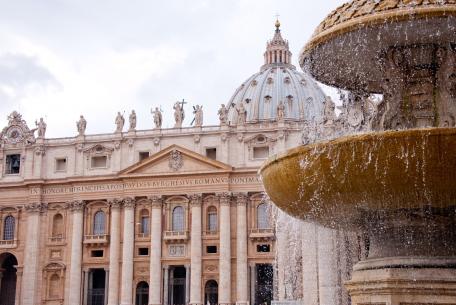
The original Saint Peter’s Basilica, a building of a dimension comparable to the current one, was erected around 320 by the emperor Constantine in the place where,
[...]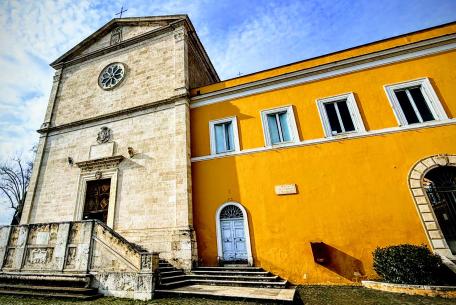
Founded in the 9th century on the site where St.
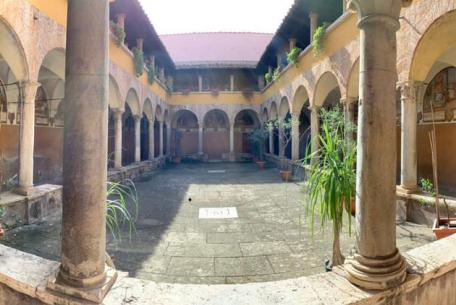
The church at the top of the Salita di Sant’Onofrio, a rather steep driveway to the monastery constructed in 1446 to allow people to reach it, was built starting from 1439 on the h
[...]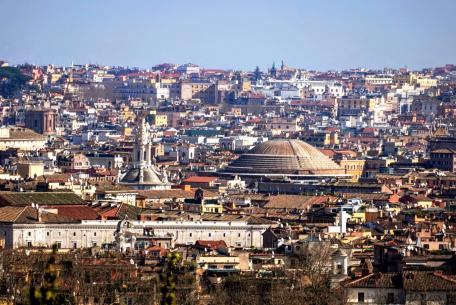
From Janiculum Promenade you can enjoy one of the most evocative views of the historic centre of Rome.
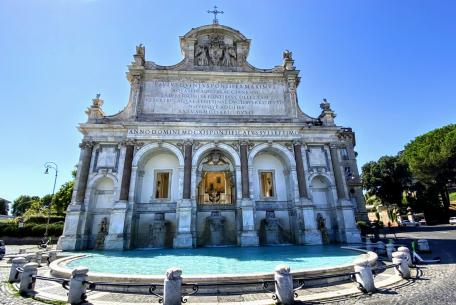
Designed and built to mark the terminus of the Trajan Aqueduct, between 1610 and 1614, by architects Giovanni Fontana (1540-1614) and Flaminio Ponzio
[...]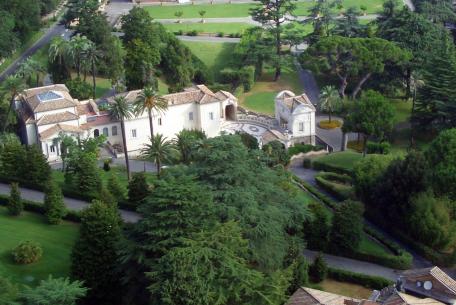
The Vatican Gardens occupy about two thirds of the surface of the Vatican City and have been the Pope's resting and meditation place since 1279, when Pope Nicholas III moved the pa
[...]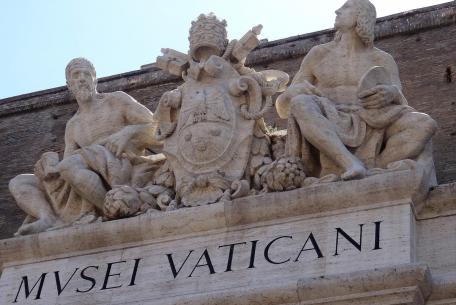
As a collection of ancient sculptures, the first group was begun by Julius II (1503-13) but it was Clement XIII (1758-69) who had the Secular Museum created with the assistance of
[...]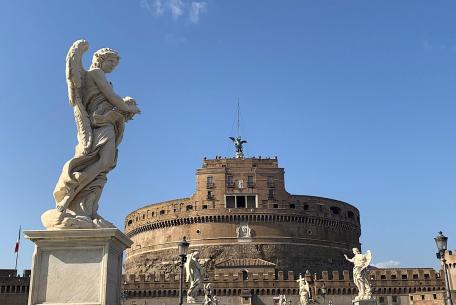
Located on the right bank of the Tiber, a few steps from the Vatican which it is connected to by the
[...]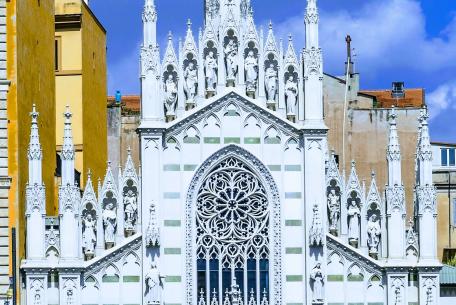
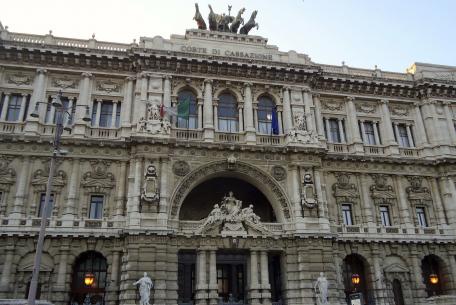
Home to the Supreme Court of Justice and the Council of the Lawyers' Association of Rome, the Palace of Justice is also known as the Palazzaccio, the nickname Romans gave it, for i
[...]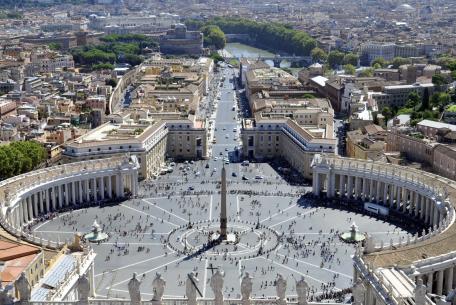
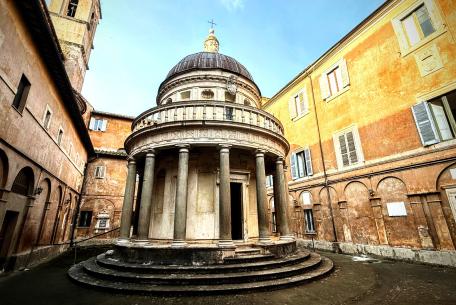
On the Janiculum hill, inside the complex of San Pietro in Montorio, there is this small architectural
[...]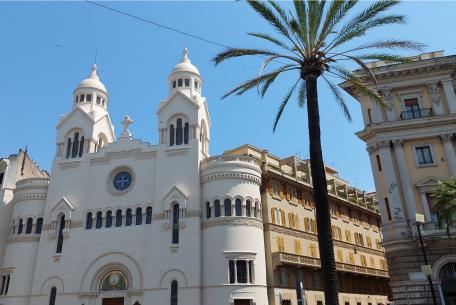
Inaugurated with a solemn ceremony on 8 February 1914, the Waldensian temple in Piazza Cavour was built in a national-Protestant style, to be immediately identified as a church, bu
[...]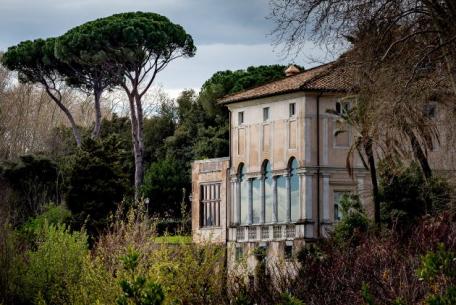
Perched on the slopes of the Janiculum Hill, Villa Lante is one of the best-preserved examples of the 16-century Roman villa architecture: togethe
[...]In Rome, one country is living in another: the Vatican and Italy.
Via della Conciliazione is the imposing entrance to the smallest sovereign state in the world. Saint Peter's Square is the heart of world Christianity, surrounded by the splendid colonnade, a masterpiece by Gian Lorenzo Bernini. It welcomes pilgrims and tourists from all over the world in a symbolic embrace. Here, every Sunday at noon, believers gather to attend the Angelus Domini and receive the Pope's blessing. The majestic Basilica, built over about two hundred years, overlooks the square. At the top is the beautiful 16th-century dome, designed by Michelangelo and completed by Della Porta and Fontana. The interior houses masterpieces created by the greatest artists in history - including Bernini, Maderno, Borromini, Canova, Cavalier d'Arpino - and sites of extraordinary historical and spiritual value, such as the Vatican Grottoes and the pre-Constantinian Necropolis, where is Peter's tomb.
Not to be missed a visit to the incomparable collections of the Vatican Museums. Here, you can admire Greek and Roman sculptures, tapestries, Egyptian antiquities, precious frescoes, and works of art by artists, such as Giotto, Beato Angelico, Filippo Lippi, Perugino, Pinturicchio, Tiziano, Carracci, Caravaggio, Poussin, Reni and Guercino. Inside is the magnificent Sistine Chapel, the seat of the Conclave for the election of the Supreme Pontiff, where you can admire the marvellous Michelangelo's Last Judgment.
The marvellous Vatican Gardens occupy about two-thirds of the surface of Vatican City. They are a riot of colours and scents and Popes' resting and meditation place since 1279. The area around the Vatican is part of Rione Borgo: a series of characteristic streets full of restaurants, hotels, religious souvenir shops and historical shops for cassocks and vestments.
In a dominant position, between Rione Trastevere and the Vatican, is the Janiculum Hill, one of the most evocative places in Rome. The view is breathtaking: the city appears as a succession of roofs, baroque domes and monuments.
The romantic Passeggiata del Gianicolo winds uphill in a single winding road at the height of the ancient church of Sant'Onofrio. In its convent, the poet Torquato Tasso died in 1595. Further on, the road branches off into two tree-lined avenues, flanked by 84 busts of Garibaldi's soldiers who fought for the defence of Rome in 1849. Among the main monuments are the two equestrian monuments to Anita and Giuseppe Garibaldi and the bizarre Lighthouse of the Italians in Argentina, made in 1911 by Manfredo Manfredi. It was donated to the city by the community of Italians in Buenos Aires for the 50th anniversary of the Italian Unification and to celebrate Rome as the capital.
Overlooking Rome, Villa Lante is one of the best-preserved Roman villas of the 16th century. It is a precious testimony of the works of the Raphael school and the "new golden age" of the Medici popes. Between the 19th and 20th centuries, it was the location of a prestigious cultural salon organized by Wolfgang Helbig, the German archaeologist, and his wife Nadine Schahawskoy, the Russian princess. Currently, the property is home to the Finnish Embassy to the Holy See and the Institutum Romanum Finlandiae. An all-Roman and long-standing tradition takes place every day, from the belvedere: a cannon blank round is fired at noon, a rite born on 1 December 1847. It was Pope Pius IX who introduced it to have only one signal for the official time and to synchronize the bells of the churches of the then capital of the Papal State.
One of the most spectacular works on the Janiculum is the monumental Fountain of Acqua Paola, also known as the Fontanone del Gianicolo, erected between 1610 and 1614 at the behest of Pope Paul V Borghese as the terminal exhibition of the Traiano-Paolo Aqueduct. This Baroque masterpiece was created by the architects Giovanni Fontana, Flaminio Ponzio, and the sculptor Ippolito Buzio and later modified in its present form by Carlo Fontana at the end of the 17th century.
Inside the complex of San Pietro in Montorio, there is a small architectural jewel, now part of the Royal Academy of Spain: the Tempietto del Bramante. The great architect built it in the classic shape of a tholos or circular peripteral temple, presumably between 1502 and 1509. It is a circular building with a hemispherical dome with a lantern, surrounded on the outside by 16 granite columns.
At the foot of the hill, in the park of Villa Corsini, is the Botanical Garden, a magnificent green oasis of 12 hectares. Among its collections, you can admire naturalistic varieties from all over the world - secular trees, bamboos, palms, orchids and succulents - thematic gardens. Here, in the enchanting Butterfly Eden, you can get in direct contact with beautiful and colourful tropical butterflies flying free.
A few steps from the Vatican is the elegant Rione Prati, the 22nd and last one of the Capital, established on 21 August 1921. It owes its name to the Castello meadows, adjacent to the Mausoleum of Hadrian, where the Romans came by a gig or by the river for a pleasant picnic.
The heart of the district is the monumental Piazza Cavour, dedicated to the Piedmontese statesman Camillo Benso Conte di Cavour, adorned in the centre by a large and refined garden of palm trees and Mediterranean plants, officially begun in 1884, with the public call for the construction of the monument to Cavour. The imposing Palace of Justice overlooks the square. The Palace is also known as "Palazzaccio", a nickname given by the Romans because of its size. On the opposite side is the historic Teatro Adriano, now a movie theatre, alongside which stands the eclectic Waldensian Temple, which blends the austerity of the Romanesque Revival style with the lightness of Liberty. On the nearby Lungotevere Prati, you can admire the neo-Gothic church of the Sacro Cuore di Gesù (Sacred heart of Jesus), called del Suffragio, known as the "little Milan Cathedral". Inside is one of the most mysterious places in the city, the evocative Museo delle Anime del Purgatorio (Museum of the Souls of Purgatory). It keeps a curious collection of documents and relics of occult testimonies from the afterlife.
Refined buildings in Umbertino and Art Nouveau style characterized the district. Prati is a much-loved area by professionals, young people and shopping enthusiasts, thanks to its discreet luxury boutiques on the lively Via Cola di Rienzo, the traditional and refined cuisine restaurants, wine and cocktail bars, and numerous haute cuisine shops.











































